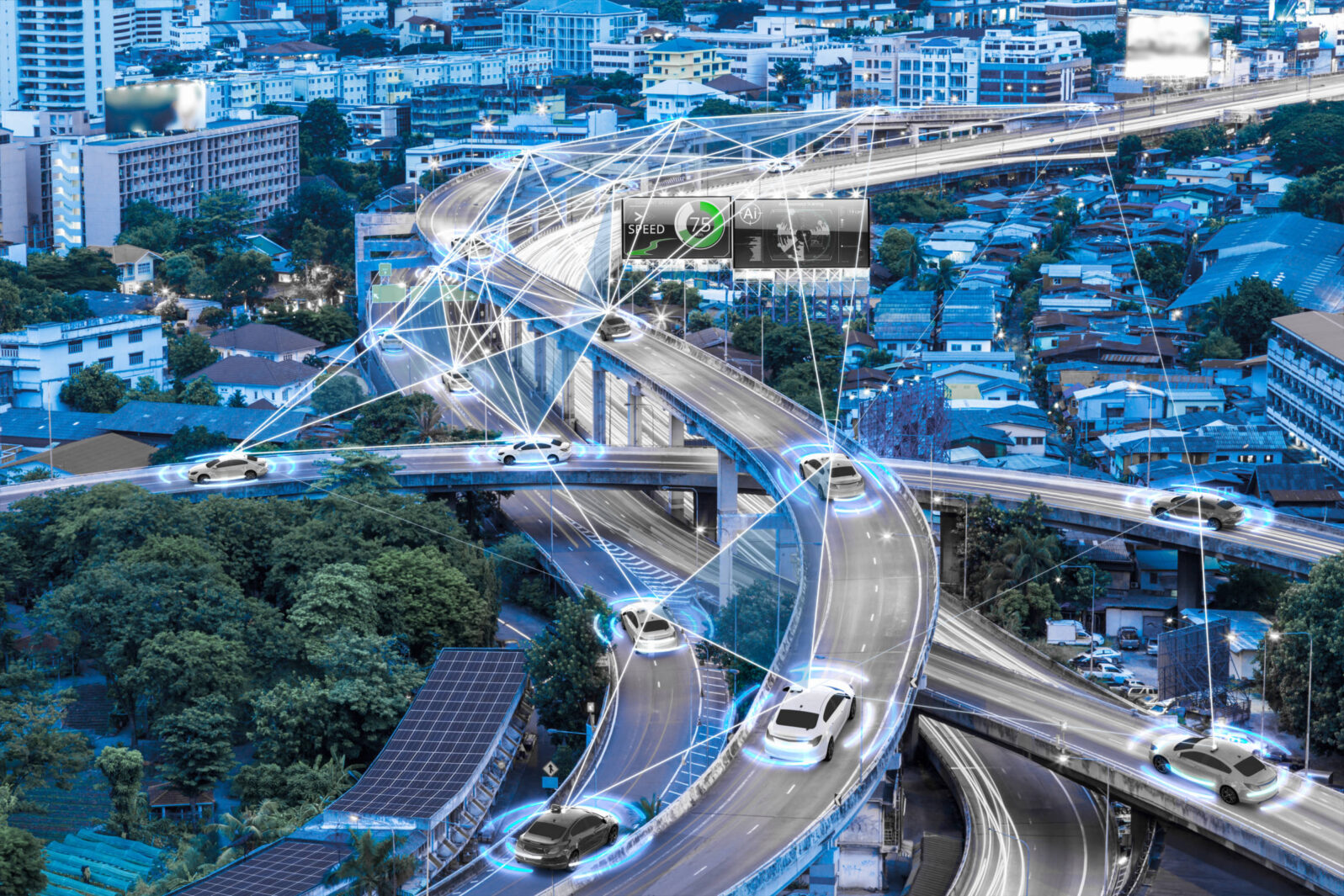New Federal Regulations Favor a Shift to 5G Cars
The Federal Communications Commission (FCC) is abandoning the older DSRC protocol for cellular vehicle-to-everything (CV2X)Last Thursday, the Federal Communication Commission (FCC) made a decision that will have a far-reaching impact on the future of vehicle infrastructure technology. In radio communications, the FCC regulates which uses each frequency band is allowed to operate on.
Historically, the 5.9GHz band was dedicated to a protocol called DSRC, which is a modification of the WiFi protocol originally geared towards vehicle messaging. The idea was that vehicles can broadcast messages about their whereabouts, direction, speed, and acceleration (or braking), so that other vehicles will know where they are and can, for example, avoid collisions by braking automatically.
Although this system connects vehicles to each other (as well as to infrastructure) for a variety of purposes, driver safety is at the top of the list. The suite of messages that can be communicated over this channel is known as V2X (vehicle-to-everything) because it is a conglomeration of messaging systems such as V2V (vehicle-to-vehicle), V2I (vehicle-to-infrastructure), and other systems as well. V2X messages include basic safety messages about the position and direction of vehicles (and non-vehicles), emergency vehicle information (“ambulance incoming”), road side alerts (“ice on bridge”), traffic light information, and even vehicle-to-vehicle warning information (“everybody watch out – I detected a rogue vehicle about to enter the intersection”), or even road/map data.
However, in the past twenty years that the FCC has had the bandwidth open, it hasn’t seen much use, despite the obvious safety advantages of cars having more awareness of each other. In order to speed adoption, in November of 2016 the National Highway Traffic Safety Administration (NHTSA) issued a proposed rule, Federal Motor Vehicle Safety Standard (FMVSS) 150, which would require the implementation of V2X using DSRC by September of 2020. However, manufacturers by and large have not participated in this effort, and the current administration does not seem eager to move forward with it.
Part of the reason for the general reluctance is the advance of 5G communication. While FMVSS 150 proposed to mandate the communication of V2X messages over DSRC, the automotive community has wanted to unify its vehicle connectivity through the 5G communication infrastructure. Because future vehicles will be equipped with 5G networking features for in-car infotainment systems, manufacturers have preferred that V2X communication be integrated with that same technology. Therefore, the automotive industry, led by Ford, has been moving to a new standard, called C-V2X, which is a cellular form of the V2X technology.
Many safety organizations have opposed this move because it delays the rollout of potentially lifesaving technology. Additionally, V2X over DSRC, even though it hasn’t been widely adopted, has undergone a significant amount of testing, which C-V2X has not. Therefore, the safety organizations would prefer that the technology we now have be implemented rather than waiting to see whether new technology proves itself in the long run.
On Thursday, the FCC weighed in on the controversy by deciding to abandon DSRC on the 5.9 GHz channel, and instead carve out part of it for unlicensed Wifi use, and part of it for C-V2X use.
I believe this will kill DSRC in the United States. Strangely, the decision comes at the same time that the EU has officially mandated DSRC. And, in a strange twist of acronyms, in Europe, DSRC is known as ITS-G5.
The decision leaves automakers who must support both systems in a quandary. However, some chip manufacturers have stepped up with chips that support both standards, so that developers need only build the V2X systems using one chipset and the specific protocol can be selected by the country in which it is sold.
While FMVSS 150 is still a proposed rule, it is not likely to be enacted as is while the industry is shifting to C-V2X for its vehicle communications protocols. This situation is also likely to delay the rollout of the technology for a few years, as the technologies are tested in vehicles. Hopefully, the technical superiority of 5G will make it worth the wait.
Don’t miss Jonathan Bartlett’s other recent observations on road safety in a digital age:
New tech to warn drivers and cars of cyclists ahead: Most people I have talked know (or knew) people who were struck by motor vehicles, either as cyclists or pedestrians. Hopefully, in ten years’ time, a bike suddenly emerging from behind a roadside dumpster will be fully visible to both the car and the driver long before a driver would usually see it today.
and
Self-Driving Cars: Florida lawmakers speed through caution signs. Legislation seems fuzzy about who accepts responsibility when things go wrong with autonomous vehicles.
